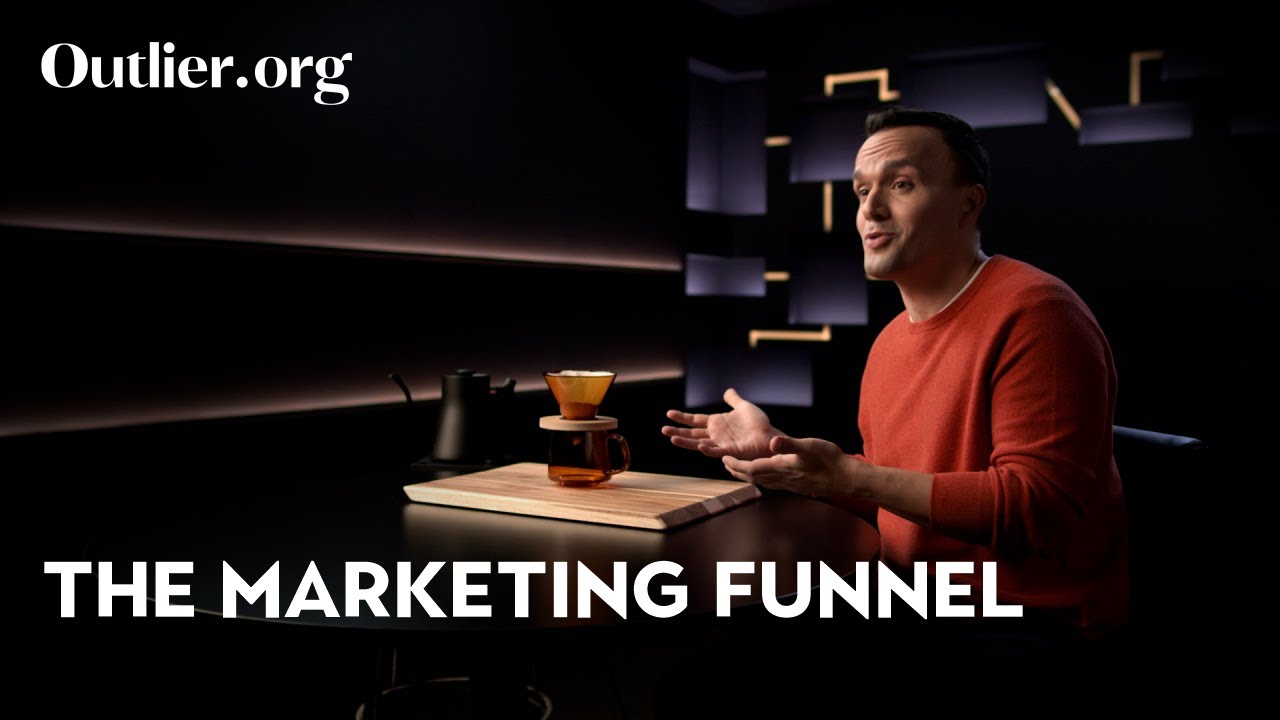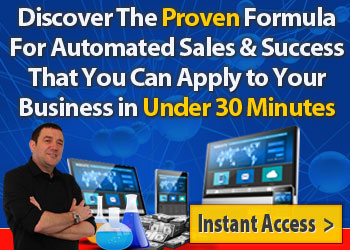Understanding the Marketing Funnel: A Step-by-Step Guide to Consumer Decision Making.
Understanding the Marketing Funnel: A Step-by-Step Guide to Consumer Decision Making is a comprehensive guide that provides valuable insights into consumer behavior and decision-making processes. The marketing funnel is a tool that enables businesses to understand the journey a customer goes through before making a purchase. This guide explores the five stages of the marketing funnel, including awareness, consideration, conversion, loyalty, and advocacy. Each stage is critical for businesses to understand their target market and tailor their marketing strategies accordingly.
In the awareness stage, businesses create brand awareness, grab the attention of potential customers and educate them about their products or services. In the consideration stage, businesses must convince customers that their product or service is the solution to their problem. The conversion stage requires businesses to make the transition from potential customers to paying customers, while the loyalty stage involves retaining existing customers and building brand loyalty. Finally, in the advocacy stage, customers become brand ambassadors, spreading positive word-of-mouth about a business and its products or services.
By understanding the marketing funnel, businesses can optimize their marketing strategies, identify potential pain points and improve their customer experience. This guide provides a step-by-step approach to consumer decision-making and offers practical tips on how businesses can take advantage of each stage of the funnel. Overall, Understanding the Marketing Funnel: A Step-by-Step Guide to Consumer Decision Making is a must-read for any business looking to enhance its marketing strategies and increase its bottom line.
From Awareness to Interest: How Design and Messaging Drive Consumer Curiosity in the Marketing Funnel
In today’s fast-paced, technology-driven marketplace, businesses must develop effective marketing strategies to drive consumer curiosity and engagement. The marketing funnel, which consists of several stages from awareness to conversion, requires a thoughtful approach to design and messaging that can engage potential customers along the way. The initial stage of awareness is essential, as consumers need to be aware of a brand’s products or services before they can become interested. This is where design and messaging play a critical role in capturing consumer attention. Businesses must ensure that their messaging is clear, concise, and visually appealing to entice customers into the next stage of the funnel.
As consumers move further down the funnel, their level of interest increases, and they become more engaged with the brand. Design and messaging must continue to adapt and evolve to maintain customer interest and keep them engaged. Clear, concise messaging that resonates with consumers is essential, as is high-quality design that reflects the brand’s values and identity.
Ultimately, the success of any marketing campaign relies on a combination of design and messaging. By understanding how design and messaging drive consumer curiosity, businesses can create effective campaigns that engage potential customers and move them further down the marketing funnel. With a thoughtful approach to marketing, businesses can build strong relationships with their customers and achieve long-term success.
Understanding the Four Stages of the Marketing Funnel: From Interest to Action
The marketing funnel is a well-known concept in the world of marketing, helping businesses to understand the customer journey from initial awareness to making a purchase. It can be broken down into four main stages, starting with awareness, interest, consideration, and finally, the decision-making stage. Understanding each stage and how it works is essential to creating an effective marketing strategy.
The first stage, awareness, is focused on introducing your brand to potential customers. This can be achieved through various marketing channels such as social media, SEO, and advertising. The goal is to get your brand in front of as many people as possible and create a lasting impression.
Once a potential customer is aware of your brand, the next stage is to grab their interest. This is where your marketing efforts should aim to capture their attention and create a desire for your product or service. This can be achieved through targeted content marketing and branded messaging.
As a potential customer moves through the marketing funnel, the third stage is consideration. At this point, they are actively researching and comparing your product to others in the market. It’s essential to have a clear and compelling value proposition that sets you apart from your competitors.
Finally, the decision-making stage is where the potential customer decides whether to make a purchase or not. This stage is where a well-crafted call-to-action could be the make-or-break factor that turns a potential customer into a loyal one.
In summary, understanding the four stages of the marketing funnel is crucial to developing a successful marketing strategy. By creating targeted messaging and focusing on each stage, you can guide potential customers through the funnel and ultimately increase your conversion rates and revenue.
Maximizing Sales with a Strong Marketing Funnel: From Awareness to Loyalty
A strong marketing funnel is crucial in maximizing sales for any business. Every potential customer goes through a journey from the point of awareness to the point of loyalty, and each stage requires a different marketing strategy. The first step is to create awareness, which can be achieved through various channels such as social media, email marketing, and content marketing. Once a potential customer becomes aware of your product or service, the next step is to capture their interest by providing valuable information and offering solutions to their problems. This is the consideration stage, where customers are evaluating their options and deciding whether to make a purchase.
The next stage of the funnel is conversion, where a customer makes a purchase and becomes a paying customer. This is where a strong call-to-action, clear product information, and a seamless checkout process are crucial. After the purchase, it is important to continue engaging with the customer and providing a positive experience, which can lead to customer loyalty. This loyalty can be fostered by offering personalized recommendations, exclusive offers, and excellent customer service.
In conclusion, a strong marketing funnel is essential for maximizing sales and building a loyal customer base. By understanding each stage of the funnel and tailoring marketing strategies to meet the needs of customers at each stage, businesses can create a seamless and effective journey for their customers.
Maximizing Conversion Rates: Navigating the Marketing Funnel for Successful Customer Acquisition
In the world of marketing, businesses strive to achieve the highest possible conversion rates. However, many struggle to navigate the complex funnel that leads to successful customer acquisition. Maximizing conversion rates requires a strategic approach that involves understanding the various stages of the marketing funnel and implementing targeted tactics to move customers from one stage to the next.
At the top of the funnel, businesses need to focus on attracting the attention of potential customers. This can be achieved through a variety of channels such as social media, paid advertising, and content marketing. Once customers have been attracted to the brand, businesses need to engage them with valuable content and relevant messaging that addresses their pain points.
As potential customers move further down the funnel, businesses need to build trust and establish credibility. This involves providing social proof through customer testimonials, case studies, and reviews. Businesses should also offer personalized experiences and nurture relationships with potential customers through targeted email campaigns and retargeting ads.
Finally, at the bottom of the funnel, businesses need to encourage customers to take action. This can be achieved through persuasive calls-to-action, limited-time offers, and free trials. Businesses should also make it easy for customers to convert by simplifying the conversion process and offering multiple payment options.
By navigating the marketing funnel with a strategic approach, businesses can maximize their conversion rates and successfully acquire new customers.
Maximizing Conversion Rates: Strategies for Moving Consumers through the Marketing Funnel
Maximizing conversion rates is one of the most crucial steps in the sales process. In order to achieve this, businesses need to implement effective strategies that will move consumers through the marketing funnel. The first step is to define the target audience and ensure that the marketing message is tailored to their needs. This can be done by analyzing data, conducting market research, and creating buyer personas. Once the target audience is identified, it’s important to create a powerful and compelling landing page that communicates the value proposition and encourages action.
Another key strategy for maximizing conversion rates is optimizing the user experience. This includes improving website speed, navigation, and overall design. It’s important to ensure that the website is mobile-friendly and easy to navigate, as more and more consumers are accessing websites from their mobile devices. Additionally, businesses should implement social proof and trust signals, such as customer testimonials and security badges, to build credibility and trust with potential buyers.
Finally, businesses should utilize retargeting and email marketing to stay top of mind with potential buyers and encourage them to take action. By retargeting customers who have visited the website but didn’t make a purchase, businesses can increase the likelihood of conversion. Email marketing is also an effective way to nurture leads and provide additional information and incentives to encourage a purchase. By implementing these strategies, businesses can increase conversion rates and achieve greater success in the competitive digital marketplace.
Maximizing conversions with pop-up ads and offering valuable education resources
In the modern business landscape, maximizing conversions is the ultimate goal for any company seeking to increase its revenue and gain a competitive edge. One way to achieve this goal is through pop-up ads, which are an effective marketing strategy that can help to promote products and services while encouraging visitors to take action on your website. The key to utilizing pop-up ads successfully is to offer valuable educational resources that will provide value to your visitors while creating a sense of urgency that taps into their needs and desires. By offering these resources, you not only build credibility with your target audience but also create a positive user experience that will convert visitors into subscribers and customers.
To maximize conversions, it’s essential to ensure that your pop-up ads are not intrusive or annoying. Rather, the ads should be strategically placed on your website, and only appear when visitors are about to leave, or after they have spent some time on your site. By doing so, your ads will appear at the right time and provide users with relevant information that will meet their needs. Additionally, incorporating educational resources such as e-books, webinars, and courses can help to establish your brand as a thought leader in your industry, and gain the trust and loyalty of your target audience.
In conclusion, building a successful pop-up ad campaign that offers valuable educational resources tailored to your target audience is an effective way to maximize conversions. By creating a positive user experience that provides value, you can engage with potential customers and convert them into loyal subscribers and customers. So, take the time to identify your target audience, create valuable educational resources, and implement pop-up ads strategically to achieve your conversion goals.
Read More: Step-by-Step Guide: How to Build an eBook Download Funnel & Generate Leads on Auto-Pilot [2022]

